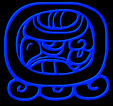Vedic vs. Tantric Hinduism
Author's Note: This article is in reference to The Soma Tantra
Differences and disagreements among religious factions don't necessarily indicate that
spiritual truths aren't real, but that we as humans can't communicate them very well.
If you study any religion enough (whether Judaism, Christianity, Islam,
Hinduism, Buddhism) you soon discover that even within its own canonical corpus, few theologians can see eye to eye.
'Hinduism' as such is a blanket term for several strains of Indian philosophy that
focus on particular deities and what they represent, without much in the way of uniformity.
Some Hindu sects reflect the Vedic caste system brought by Aryan
invaders while others represent the Tantric traditions of Indus Valley
Dravidians.
Historically, a process known as religious syncretism (merging) occurred between these Vedic
and Dravidian denominations; giving rise to the rich panoply of Hindu polytheism.
Since 'Hinduism' bears the influence of disparate schools of thought, some sociological friction between its Vedic and Tantric strains still exists.
Class struggles borne out by the Varna caste system (as well as between various ethnic groups) definitely appear to be hidden within the subtext of Hindu mythology.
For example, Brahma and Vishnu usually exemplify Aryan-Vedic ideals and morals whereas Shiva and Kali are Tantric-Dravidian forces of unrestrained freedom.
Devotees of Vishnu are thus referred to as Vaishnavas, while Shiva's followers are called Shaivas, Shaivites, or Siva Sadhus. Shakti (the divine feminine) actually outweighs Brahma (a patriarchal creator god) in this Eastern schema.
Analogously, this competition between Vedic and Tantric ways of thinking / acting was also mirrored by the ancient Greeks with their Apollo-Dionysus dichotomy. Indeed, Nietzche extrapolated it to full effect in his seminal debut: The Birth of Tragedy. Even renown Indologist Alain Danielou documented it extensively in a very fine piece of comparative religion: Gods of Love and Ecstacy.
The Soma Tantra is a contemporary work of Mythic fiction that portrays said friction between Vedic and Tantric branches of Hinduism as a war upon the moon between the Devatas and Ashuras (gods and demons, respectively).
Only those capable of delving beneath the surface of such a fantastic tale will see through to the deepest layer of its abstracted narrative...
Further Reading: Past Issues of Mythic May


 Newer Post
Newer Post





2 Bold Responses
"Differences and disagreements among religious factions don't mean that spiritual truths don't exist but that we as humans can't communicate very well."
As far as I'm concerned, this entry could have ended after the first paragraph. :)
informative, thank you!
Post a Comment